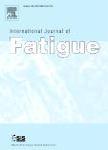版权所有:内蒙古大学图书馆 技术提供:维普资讯• 智图
内蒙古自治区呼和浩特市赛罕区大学西街235号 邮编: 010021

作者机构:CSIRO Math & Informat Sci Melbourne Vic 3168 Australia Monash Univ Dept Mech Engn Clayton Vic 3168 Australia
出 版 物:《INTERNATIONAL JOURNAL OF FATIGUE》 (国际疲劳杂志)
年 卷 期:2009年第31卷第2期
页 面:309-321页
核心收录:
学科分类:08[工学] 0805[工学-材料科学与工程(可授工学、理学学位)] 080502[工学-材料学] 0802[工学-机械工程]
基 金:Sandia National Laboratories USA
主 题:Structural optimisation Biological algorithm Damage tolerance Fatigue life Fracture strength Stress intensity factor
摘 要:Damage tolerance design philosophy assumes that numerous cracks can be present at various arbitrary locations in a structure, which makes fatigue life based shape optimisation very computationally intensive. As a result, there have been limited applications of fatigue life based optimisation. To address this, the paper presents a gradient-less 3D Biological algorithm that uses fatigue life as the design objective for shape optimisation of damage tolerant structures. This formulation is used for optimisation with numerous 3D cracks located along the structural boundary. Fatigue life based shape optimisation is demonstrated via the problem of optimal design of a through-hole in a rectangular block made of linear elastic isotropic material under biaxial loading . A range of different initial flaws were analysed to investigate the effects of crack parameters on optimal shapes. A semi-analytical method was employed for computation of the stress intensity factors (SIF). These were subsequently used for evaluating fatigue life by allowing the cracks to grow up to an acceptable final size. The optimum hole shapes were approximately elliptical with the aspect ratios being dependent on the initial and final crack sizes, and the local geometry. A significant enhancement in the fatigue life of a structural component is achieved. A fatigue life optimisation leads to the generation of a near uniform fatigue critical surface. The effect of initial flaw aspect ratio on the optimal solutions was investigated, and it is found that the fatigue crack growth law governs the nature of variation of the optimal shapes. It is also shown that the fatigue life optimised shape can be quite different from the corresponding fracture strength or stress optimised solution. This emphasises the need to explicitly consider fatigue life as the design criteria for optimisation of damage tolerant structures. (C) 2008 Elsevier Ltd. All rights reserved.